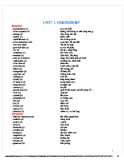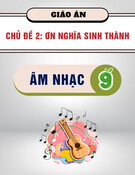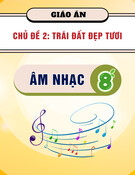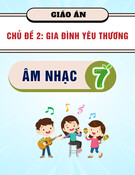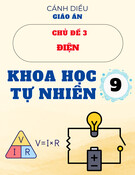
UNIT 13 : HOBBIES
PART B: Speaking
I.Objectives
.By the end of the lesson, the students will be able to
- make a dialogue with their partners about their hoby –
collecting stamps
- talk about their own hobbies and express the reasons they
take up such hobbies.
II.Language notes:
a. Structures:
- What is your hobby?
- How do you collect ...?
- Where do you buy ...?
- How do you organise ...?
- Why do you collect ....?
- What are you going/planning to ...?

-classify something into categories, the simple present and the
simple future tense.
-
b. Vocabulary:
- stamp collecting
- chat (v)
- book stall (n)
- collection (n)
- exchange (v)
- category (n)
- classify (v)
III.Material
- Pictures , text book
- Pictures of activities: swimming, fishing, stamp-collecting,
mountain-climbing, playing compute games,

reading books, watching TV, chatting with a
friend on the phone, etc.
1. Some kinds of books, i.e. student books, comic books, novels…
2. Some name tags: student books, comic books, novels…
IV.Procedures:
-1. Checking up:( 5’)
Answer the questions:
What is the first hobby of writer?
Write some new words
Contents T & Ss’activities
I - Warm up(5’)
Guessing game:
- Call on a student and give a picture to
him/her.
- Don't let the others see the picture.
-
A student goes to the
board and gets the
picture.
- The others can't see the
picture.

-
Ask them to make Yes or
No questions to
guess:
'What are the special foods in the picture? '
'What holiday is it?'
- Show the picture on the screen.
(Can have some music about new year)
- Make Yes or No
questions to guess.
- T Arouse the students'
interest, curiosity and
provide an introduction to
the topic and content.
- Relate the content of the
lesson to the students'
own background
knowledge and interest to
motivate students.
Visual aids.

Possible Questions:
Is there a cake in the picture?
Have you got...?
Is it ... holiday?
- Possible Problems:
The students may misunderstand between
Yes/ No questions and Wh-questions ->
Teacher will suggest some structures as
examples.
II - Task 1: (10’)
- Introduce the situation.
- Tell the students to listen and watch the
show of the dialogue to imitate
- Set up pairs of the students in the class.
The student answers the
questions: Yes/ No.
- Look at the picture to
check the result.
- Listen to the
introduction.
- Listen and watch the
show of the dialogue to
imitate (pronunciation,
intonation...)
- Work with the partner

